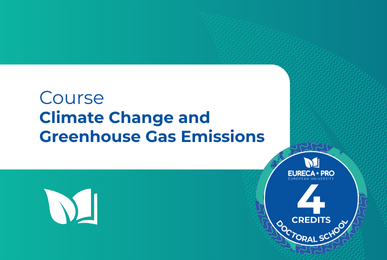
The course aims to the analysis and formulation of design criteria for the application of measures for the reduction of greenhouse gas (GHG) emissions in the atmosphere. It is also formulates the calculation of GHG emissions from anthropogenic and natural sources. Air pollutants and aerosols are also studied together with mathematical dispersion models, as well as, climatic models. In addition, the energy balance in Earth is studied using mathematical models. Finally, the course includes a number of laboratory exercises.
Syllabus
- 1st week: Atmospheric structure and composition.
- 2nd week: Air pollutants.
- 3rd week: Radiation in the atmosphere. Greenhouse effect.
- 4th week: Energy balance and climate.
- 5th week: Emissions of gaseous components and aerosols. Air pollution dispersion.
- 6th week: Atmospheric chemistry and climate.
- 7th week: Atmospheric aerosols and effects on visibility and climate.
- 8th week: Climate Characteristics.
- 9th week: Single cell models. Climate models.
- 10th week: GHG pollutants.
- 11th week: Formulation of an emission inventory.
- 12th week: Methodology for the calculation of the Carbon footprint.
- 13th week: Project for the calculation of the Carbon footprint.
Pre-Registration instructions:
Course type: Semester-Long Course
Duration: 13 weeks
Instructor(s): Michail Lazaridis, Apostolos Voulgarakis
University offering the course: Technical University of Crete
Semester: Fall/Winter
Language: English
ECTS: 9
Registration Period Start Date: 16 Σεπτεμβρίου 2025
Registration Period End Date: 9 Οκτωβρίου 2025
Short Description: The course aims to the analysis and formulation of design criteria for the application of measures for the reduction of greenhouse gas (GHG) emissions in the atmosphere. Air pollutants and aerosols are also studied together with mathematical dispersion models, as well as, climatic models.
Mobility Type: Specialized Course
ExternalURL: https://www.eurecapro.tuc.gr/en/news/item/tuc-offers-5-rcp-courses-to-eureca-pro-postgraduate-students-in-winter-2025